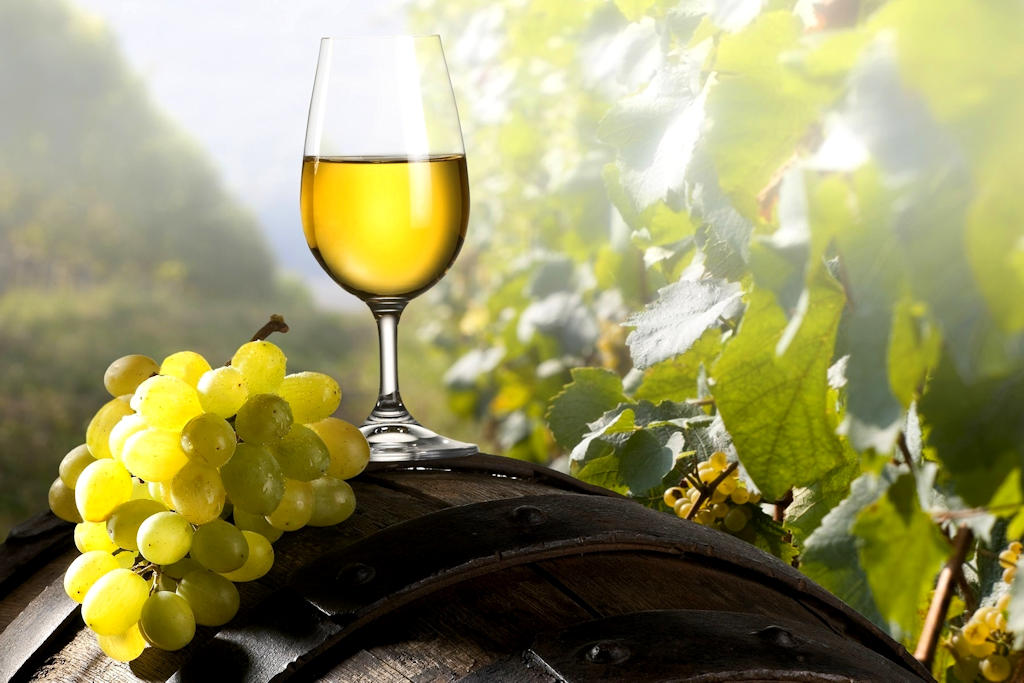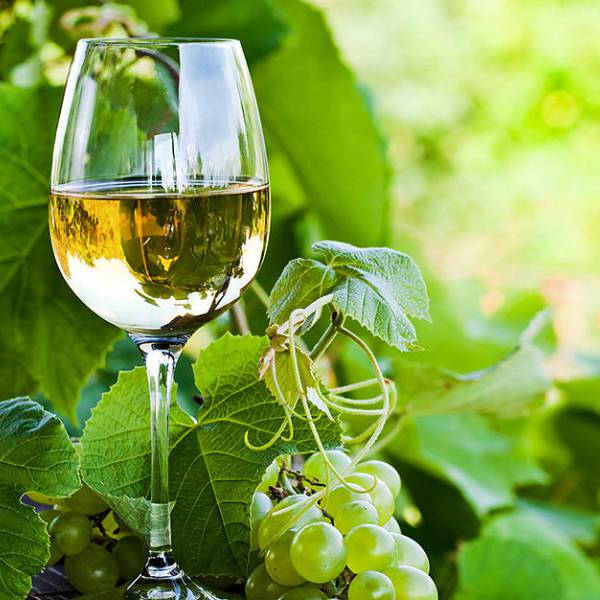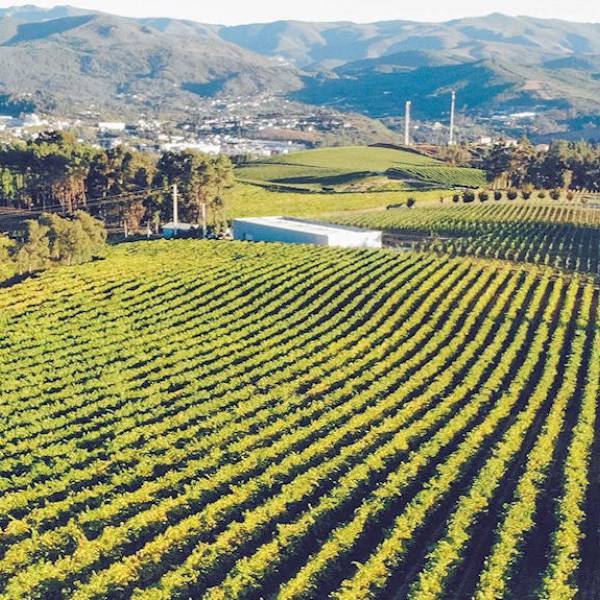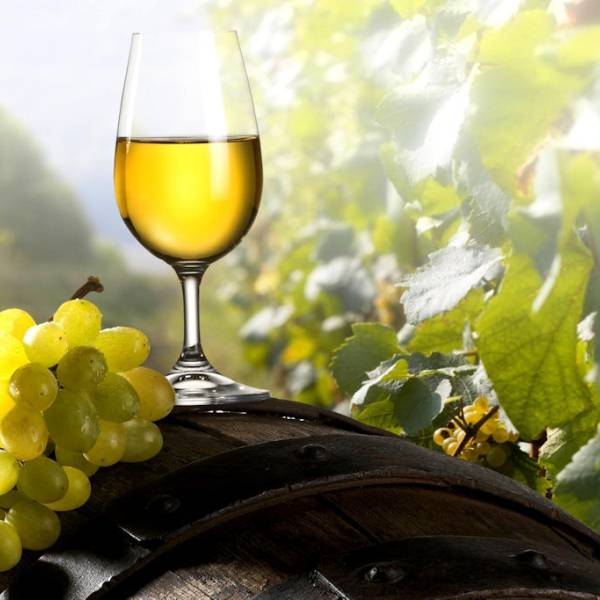What sets Vinho Verde apart is its extraordinary combination of low alcohol content, typically ranging from 8.5% to 11%, and high acidity, resulting in a refreshingly crisp profile. The wine's slight effervescence can be attributed to either natural malolactic fermentation in the bottle or the intentional injection of carbon dioxide. Vinho Verde's fruit-forward and floral aromas and flavors are an expression of the diverse grape varieties used in its production.
For white Vinho Verde, Alvarinho takes center stage as the most distinctive and renowned grape variety in the region. Known as Albariño in Spain, it lends the wine captivating notes of grapefruit, peach, and delicate florals, with a remarkable potential for aging. Arinto, often referred to as Pedernã, stands as one of Portugal's finest white grapes, offering juicy melon and citrus flavors with subtle bitter undertones. Azal, a high-acid grape, contributes refreshing lemonade-like flavors to the wines, while Avesso, similar to Alvarinho, adds a subtle hint of green almond for added complexity. Loureiro, reminiscent of Riesling, charms with aromas of lime blossom, apricot, and honey, often employed in blends to enhance fragrance and elegance. Lastly, Trajadura complements the wine with richness and aromas of pear and citrus blossom, frequently blended with Alvarinho to elevate its character.
On the red side of Vinho Verde, Vinhão, also known as Sousão, reigns supreme. This teinturier grape imparts intense color and robust tannins, showcasing flavors of sour plum, sour cherry, pepper, and peony. Borraçal, with its fruity and spicy notes, along with lively acidity and freshness, adds depth to the blend. Espadeiro, meanwhile, contributes to light-colored wines with enticing floral and red berry aromas.
In recent years, a rare and modern addition has emerged within the Vinho Verde family: Rosé Vinho Verde. Comprising approximately 5% of the total production, this style is typically crafted from blends of red and white grape varieties, including Espadeiro, Padeiro, Alvarelhão, and Loureiro. Rosé Vinho Verde embodies the characteristic low alcohol content, high acidity, light body, and subtle effervescence, boasting a delicate pale pink or salmon hue accompanied by fresh, fruity, and floral aromas. Like its white counterpart, it is intended to be enjoyed young and chilled.
White Vinho Verde:
While Vinho Verde can be classified according to color, grape variety, carbonation level, and sweetness, it is the diversity of types that truly makes it an exceptional wine. White Vinho Verde takes the lead, representing around 85% of the total production. Crafted from a blend of grape varieties such as Alvarinho, Arinto, Avesso, Azal, Loureiro, and Trajadura, it delights with its pale lemon or straw color and an inviting aroma teeming with freshness, fruitiness, and floral notes. Its low alcohol content, typically ranging from 9% to 11%, coupled with its high acidity, light body, and subtle effervescence, make it the perfect companion for warm summer days.Red Vinho Verde:
Red Vinho Verde, comprising roughly 10% of the production, offers a rustic and less common alternative. Blends of dark-skinned grape varieties, including Vinhão, Espadeiro, Borracal, Alvarelhão, and Cainho Tinto, yield a wine characterized by its elevated acidity, pronounced tannins, deep color, and tangy taste. With its dark red or purple hue and a captivating fruity and earthy aroma, this unique wine is often served slightly chilled in small bowls, inviting a sensory exploration of its distinctive character.Rosé Vinho Verde
Rosé Vinho Verde, the youthful version of Vinho Verde is crafted from red grape varieties like Espadeiro, Padeiro, Vinhão, and Touriga Nacional. With its delicate pink hue, slight effervescence, and refreshing acidity, this versatile wine delights the palate with flavors of sour cherry, plum, pepper, and floral undertones. Best enjoyed shortly after bottling and served chilled, Rosé Vinho Verde pairs exceptionally well with spicy dishes, desserts, and summertime fare.Sparkling Vinho Verde:
As for Sparkling Vinho Verde, this extraordinary and celebratory variation can be found in both white and rosé. Utilizing the same grape varieties as still Vinho Verde, these wines undergo a second fermentation in the bottle (traditional method), in the tank (Charmat method), or a combination of both (ancestral method). Sparkling Vinho Verde delights with an effervescence livelier than its still counterpart and can be crafted in both dry and sweet styles, depending on the dosage - the sugar added after the second fermentation. With its radiant color and crisp, fruity, and floral aroma, Sparkling Vinho Verde embodies joy and is destined to be enjoyed young and chilled.Single-Varietal Vinho Verde:
For those seeking a premium and distinctive experience, Single-Varietal Vinho Verde offers an exceptional choice. Available in both white and red variations, this exclusive style is crafted using only one grape variety, with Alvarinho and Loureiro often chosen for white wines, and Vinhão and Espadeiro for red wines. Single-Varietal Vinho Verde boasts a higher alcohol content, ranging from 11% to 14%, as well as greater body, complexity, and aging potential compared to blended Vinho Verde. With its clear color and a refined, elegant, and intricate aroma, this exceptional wine can be oak-aged to further enhance its structure and flavor, promising an extraordinary oenophilic experience.The versatility of Vinho Verde extends to its compatibility with an array of culinary delights. Seamlessly complementing dishes such as seafood, salads, sushi, chicken, pork, and cheese, this Portuguese gem is a true gastronomic companion. For a delightful pairing, white Vinho Verde thrives alongside grilled sardines, oysters, clams, codfish, or octopus. Red Vinho Verde finds its place alongside roasted lamb, chorizo, or blood sausage, showcasing the wine's high acidity and tannic structure. Rosé Vinho Verde shines when paired with delicacies like smoked salmon, tuna, or ham, enhancing the interplay of flavors. With Vinho Verde's multifaceted character and the culinary world as your canvas, the possibilities for delightful combinations are endless.
In conclusion, Vinho Verde's allure lies in its distinctive freshness, lightness, and effervescence. From its ancient Roman origins to its present-day prominence, this remarkable Portuguese wine captivates with a myriad of flavors and aromas, meticulously reflecting the region's terroir and climate. Whether indulging in the white, red, rosé, sparkling, or single-varietal variations, Vinho Verde invites exploration, celebration, and appreciation of its unique characteristics. So, embark on a sensory journey and savor the refreshing delights of Vinho Verde—a treasure of Portugal's viticultural heritage.










